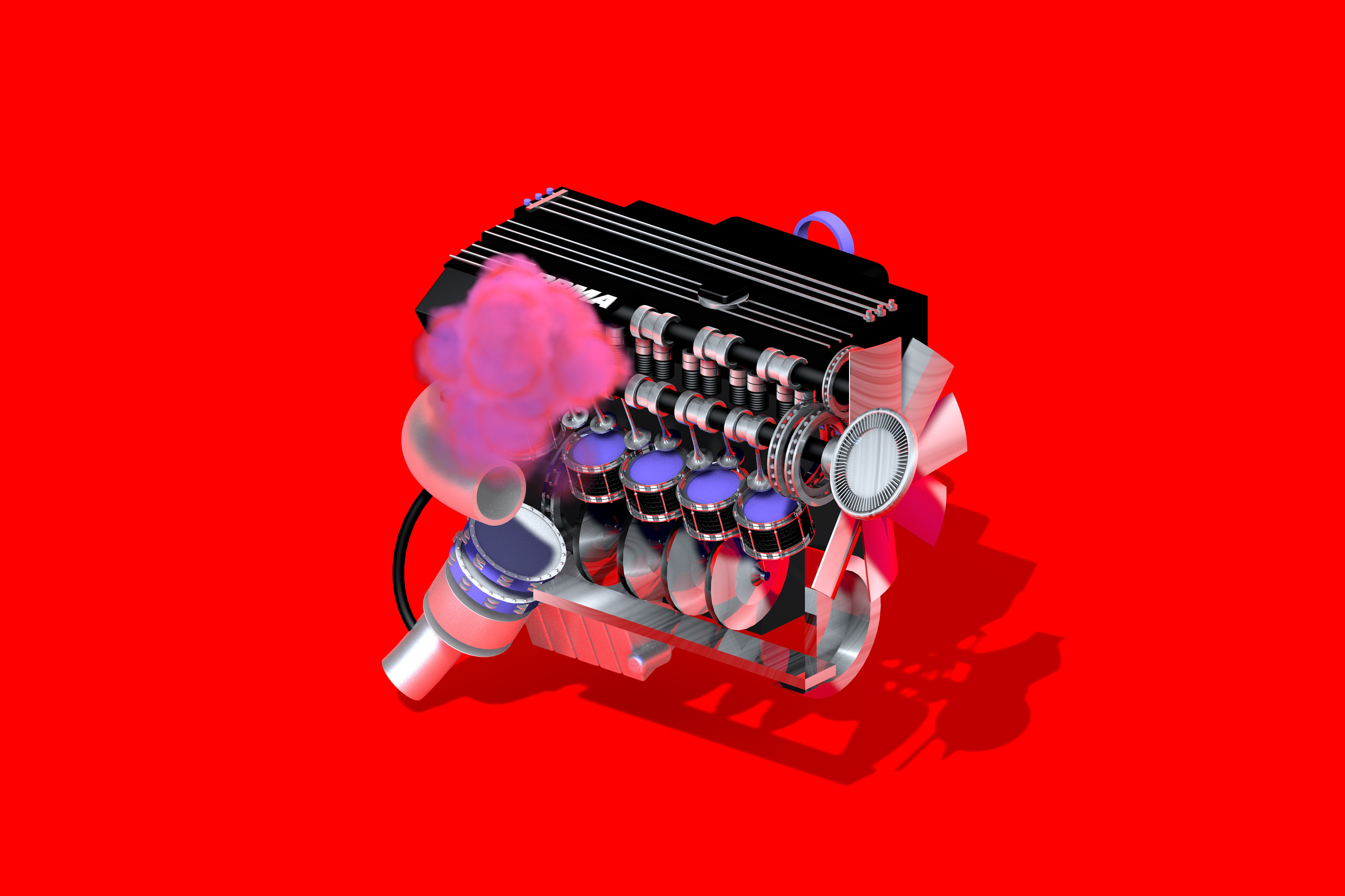Nightclubbing: The Music Institute
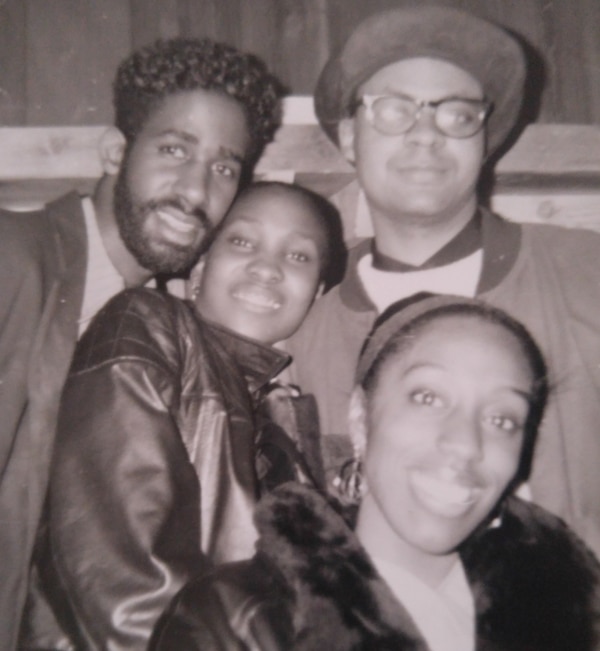
The definitive tale of the seminal Detroit club that gave techno a local platform
On a boat docked in Detroit’s Windmill Pointe Park, where the wind nudged the halyards and wind chimes into a gentle chorus on the marina, George Baker was reminiscing over some familiar small print. “‘This card,’” he said, stifling a laugh as he examined an iPhone screen, “‘is the property of the Music Institute and will be returned at the request of the Institute authorities. This card is not transferable.’” Baker summed up the club’s membership scheme as a “roadmap to being legitimate” – police had shut down the opening night, unmoved by Salsoul Orchestra’s “You’re Just the Right Size.” The cards – black, gold and platinum – were tongue-in-cheek, but the aspirational subtext came to define the Music Institute.
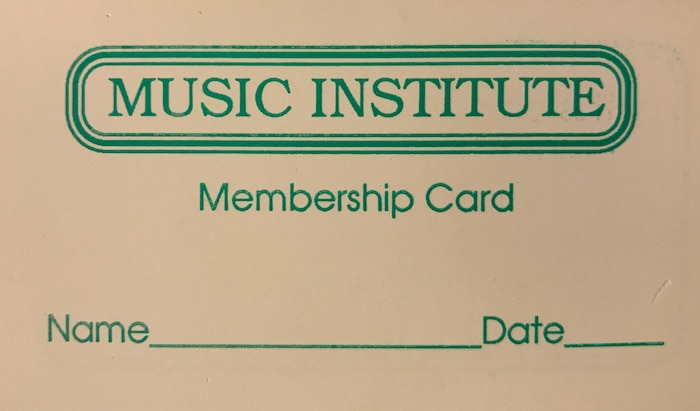
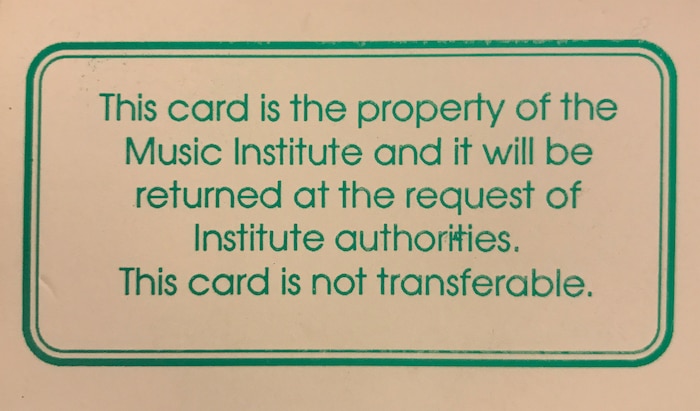
Opened in May 1988, the Music Institute was an after-hours spot in downtown Detroit. On Fridays, the residents – Derrick May
The Music Institute is thought of as a techno club, because it was the first in the city – and by extension, the world – to give the sound a dedicated platform. (There were other clubs in Detroit, such as Cheeks, where DJs were playing techno records.) But the Saturday nights, called Back To Basics, were modelled on the sensual, expansive DJing of Larry Levan and Frankie Knuckles. Saunderson’s Inner City project was the musical bridge between Fridays and Saturdays, but Miller and Pearson were more likely to play vocal-heavy disco records by First Choice and Sharon Redd than “Big Fun.”
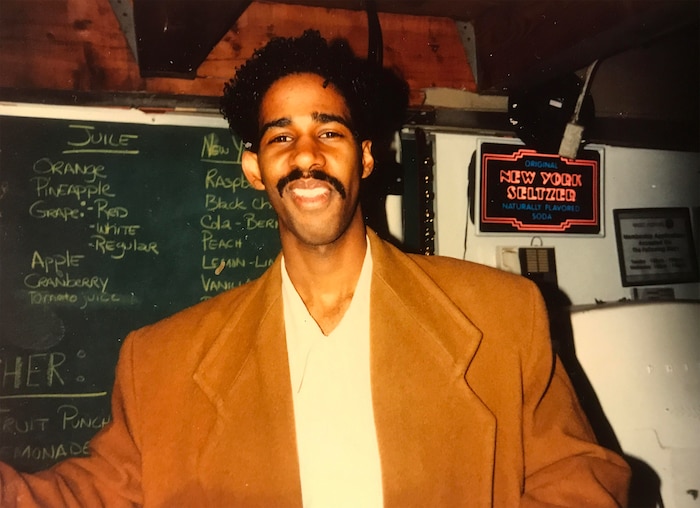
Baker and Miller were high school friends from Saint Martin de Porres. They’d acquired a taste for clubbing as teenagers in the city’s high school party circuit, and were regulars at L’uomo, one of Detroit’s most popular clubs in the early ’80s. “Alton had the information [on where to go], I had the wheels,” said Baker, “and we were both 16, 17 years old, full of hormones. Where’s the girls? Where’s the music? Let’s go hang! We were not trying to do calculus and trigonometry.”
They were more eager, however, to test their entrepreneurial instincts. For a brief period, they ran a fashion label, Miller & Michael. “We were really big fans of Giorgio Armani at that time,” said Miller. Baker could make “amazing” Jean-Paul Gaultier knock-offs, Pearson told me; he and Miller used to wear outfits Baker made for them at the Music Institute.
In 1986, a mutual friend, Tony Hunter, introduced Miller to Pearson, who had moved to East Lansing from Chicago to stay with his aunt and uncle. (Pearson met May and Baker within the same week.) A precocious teenager who had danced at the Warehouse, the Power Plant, Music Box and a string of other notable Chicago venues, Pearson was a scene veteran long before he was old enough to be a legal part of it. “The first DJs I heard,” he told me, “were Farley Keith and Steve Hurley at a high school party in my freshman year.”
Baker, Pearson and Miller made regular five-hour trips to the Windy City together, sometimes with May and other times in groups of two. They went to the Twilight Zone in Toronto and New York’s Paradise Garage, too. Baker, Miller and May had, to varying degrees, clocked in the hours on Chicago’s dancefloors, but Pearson’s connections greased access to the city’s best parties. “Because once you’ve had a taste of anything good, you don’t settle,” he said, “and I wasn’t interested in settling.” When the Music Box closed in 1987, they went wherever the DJs went – Club C.O.D. on Chicago’s North Side, gay pride events, private loft parties and so on.
These days, a group of friends going to a club – and leaving it feeling transformed – sounds like a typical coming-of-age story. Baker, Pearson and Miller embarked on these trips with a combination of missionary enthusiasm and secretarial efficiency; they were already, in experiential terms, grown-ups. Regulars at the Paradise Garage referred to Larry Levan’s sets as Mass; Miller, too, couched his memory of the Music Box in spiritual terms. “It was breathtaking, awe-inspiring, inspirational,” he said. “Everything that you could have in an ultimate club experience was in the Music Box. The rapport that Ron Hardy had with his audience, it was just incredible.”
Once you’ve had a taste of anything good, you don’t settle... and I wasn’t interested in settling.
Baker had moved to New York in 1986 to study at the Fashion Institute of Technology, but was going back to Detroit and Chicago often enough to realize that his immediate future wasn’t in garment manufacturing. “Once I heard Larry Levan, once I heard Ron Hardy and Frankie Knuckles,” he said, “anything that Detroit could offer us was incomplete, unsatisfactory. We decided that, by hook or crook, we were going to open up something, because our idea was that DJs need to be in control of the music. They don’t need to report to a boss, to a club owner or a programmer or a promoter.”
Transposing these experiences to the Music Institute was a huge challenge. Money was tight. They had zero experience. Downtown Detroit was deserted. The city’s homicide rate, according to a report in the New York Times, was second only to Washington D.C.’s in 1988; such statistics amplified the perception that downtown was dangerous, particularly at night.
“I didn’t realize Detroit was such a ghost town,” said Saunderson, who moved to the city in 1988. “People were there to work, and after 4:30 PM, it became a ghost town... I had to drive out to the suburbs to get groceries. It wasn’t like I could just go anywhere downtown to get it. It was pretty bizarre.”
Going for a drive in downtown Detroit now – to Bates Street, to the corner of Witherell and East Montcalm, to Woodward Avenue – usually leads to roadworks or a construction site. There were no such signs of optimism, much less activity, in 1988. When Miller said he’d seen tumbleweeds blow down Broadway in those days, I presumed it was a figure of speech. But, on a separate occasion, Baker told me he’d seen them, too. “At a certain point in the day, in downtown Detroit, what you see now, that’s a whole other world. It was seedy. There was... a certain discomfort. You had to be an urban warrior to make your way through it.”
We were on an island unto ourselves for the most part.
Neglected and depopulated, downtown’s emptiness came with an unusual sense of freedom. “We were on an island unto ourselves for the most part,” said Miller. Outsiders in many ways from Detroit’s club scene, the Music Institute had a loftier sense of purpose. The club’s logo, styled as a university crest, represented its earnest outlook – the Music Institute was an education as well as a party, and the regulars applied themselves accordingly.
“The music was hot,” said John Collins, a resident at Cheeks in ’88 and a Detroit dance music historian. “People dancing, serious dancing... Sometimes people dance, then there’s serious dancing.” He thumped his fist on the table we sat round, at a diner on West Grand Boulevard. “When you’re letting the music take you. When you went to a gay club back in the day, the music took them. I mean, they took it. The Music Institute had that same feel as a gay club, because… it was serious. It was serious music, serious dancing.”
One of its most serious dancers was Sierra Donaven. Some months before the club opened, she had gone down the stairs of her Whitmore Plaza apartment building, with rollers in her hair, to knock on her neighbor’s door shortly after 11 PM. This had become routine. Every preceding night for two weeks, a constant “boom, boom, boom” had been coming from the apartment below her. Alton Miller, who was living with Pearson, opened the door. She could smell weed smoke. “That just pissed me off even more,” she said.
To assuage her, Miller offered her VIP membership to the Music Institute. She’d been an enthusiastic fixture of the local club scene since the mid-’70s, but was skeptical of Miller’s venture. More importantly, she had work the next morning – as a special agent for the US Treasury. “They never knew that I loved to dance,” she said. “They didn’t know anything about me. I don’t even know if they knew that I was in law enforcement, but they finally opened up this club. This is the honest-to-goodness truth: from the day they opened the doors, I was there, every single night.”

Though many dancers went to the Music Institute on both Friday and Saturday nights, the club brought two distinct crowds. The Next Generation was younger and straighter; Back To Basics fostered an older crowd, and a larger gay following. “Detroit was very segregated at the time,” said Pearson, “with the straight clubs versus the gay clubs. We knew that we didn’t want what we had already seen [in Detroit]. We wanted to create something that would have given us the same spirit as New York and Chicago, where it combined many kinds of people. Also, because Detroit was also still very black at the time, it was amazing to draw some white kids from the suburbs, as well.”
The Music Institute wasn’t necessarily the only place in Detroit where a cosmopolitan crowd would gather, Collins told me, but they weren’t commonplace. Some bars and clubs erected barriers – asking for several pieces of ID, or playing certain types of music – to discourage certain groups, especially black men and women, from entering.
The process of opening the Music Institute took a year. In 1987, the trio spent three months renovating an old Firestone building near Wayne State University, which they would have called the Gate. “The physical layout of the club was very similar to the Paradise Garage. It had a ramp, it was beautiful,” Miller said. They were forced to abandon it after learning they’d need several thousand dollars to install a boiler system. Wayne State University staff were also lobbying against the proposal. “They basically didn’t want any black people doing some shit like that in the middle of the city,” said May.
To keep the momentum going and gauge demand for the club, they held two parties at a dance studio in Harmonie Park. Patrick Burton and Greg Sobieraj, well-connected clubbers who regularly saw Frankie Knuckles and Ron Hardy play (Burton was also a Paradise Garage member), were integral to the success of those events. “Greg and I, we went everywhere,” said Burton, a DJ, performance artist and schoolteacher at the time. “This was a time when clubs were very segregated, whether it was racially or by sexual orientation. We went to straight clubs, gay clubs, black clubs, white clubs. We went to all the clubs.” By connecting the Music Institute’s founders with the gay scene they wanted to court, Burton and Sobieraj’s promotional efforts helped secure that community’s enthusiasm for the club.
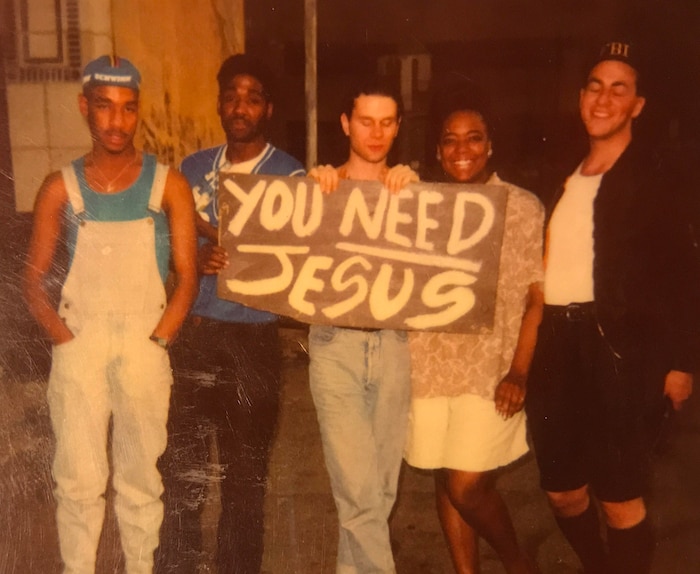
The club was done on a wing and a prayer. I hear people talk about how the soundsystem was so incredible. Honestly, it wasn’t.
Once another space for the club had been found – a four-story shoe store on 1315 Broadway – the founders got to work. “We sanded lots of wood floors,” said Miller, who scraped and stripped the dancefloor of glued-together layers of tile. He had moved out of Whitmore Plaza and into the third floor of the building; Pearson took the floor above him. (The club was forced to rent the whole building.) The owners hired Chuck Roper, a carpenter friend, to help them out. “I did the work initially,” said Baker, “because I didn’t even know Chuck then. Putting in the bathrooms. Putting in toilets. Trying to put up stall walls. I built them out of wood. It was so rudimentary, it was so primitive.” The interior was, for the most part, dark and plain.
Sarah Gregory, an English artist, had painted a mural on the wall; a few Abstract Expressionist pieces, painted by a local artist and a friend of May’s, Victor Littlejohn, were hung elsewhere. Burton had painted white text – “poems and... surreal thoughts” – using stencils and traced projections on the tops of the walls. “There was this whole row of clocks,” he said, “and then it was the time in each city, like Detroit, London, Paris, New York.” An elevated office with sliding glass windows, about 15 feet above the dancefloor, became the DJ booth.
As far as production went, “we’re talking a fog machine on one end and a strobe light on the other end,” said Baker. “This wasn’t a laser light show.” Even the soundsystem, installed by Carlos Oxholm, was basic. “The funny thing about the soundsystem at the Music Institute is, back then, there was no budget,” Oxholm said. “The club was done on a wing and a prayer. I hear people talk about how the soundsystem was so incredible. Honestly, it wasn’t. It really wasn’t that incredible of a system, but it was a small room, so it was loud.”
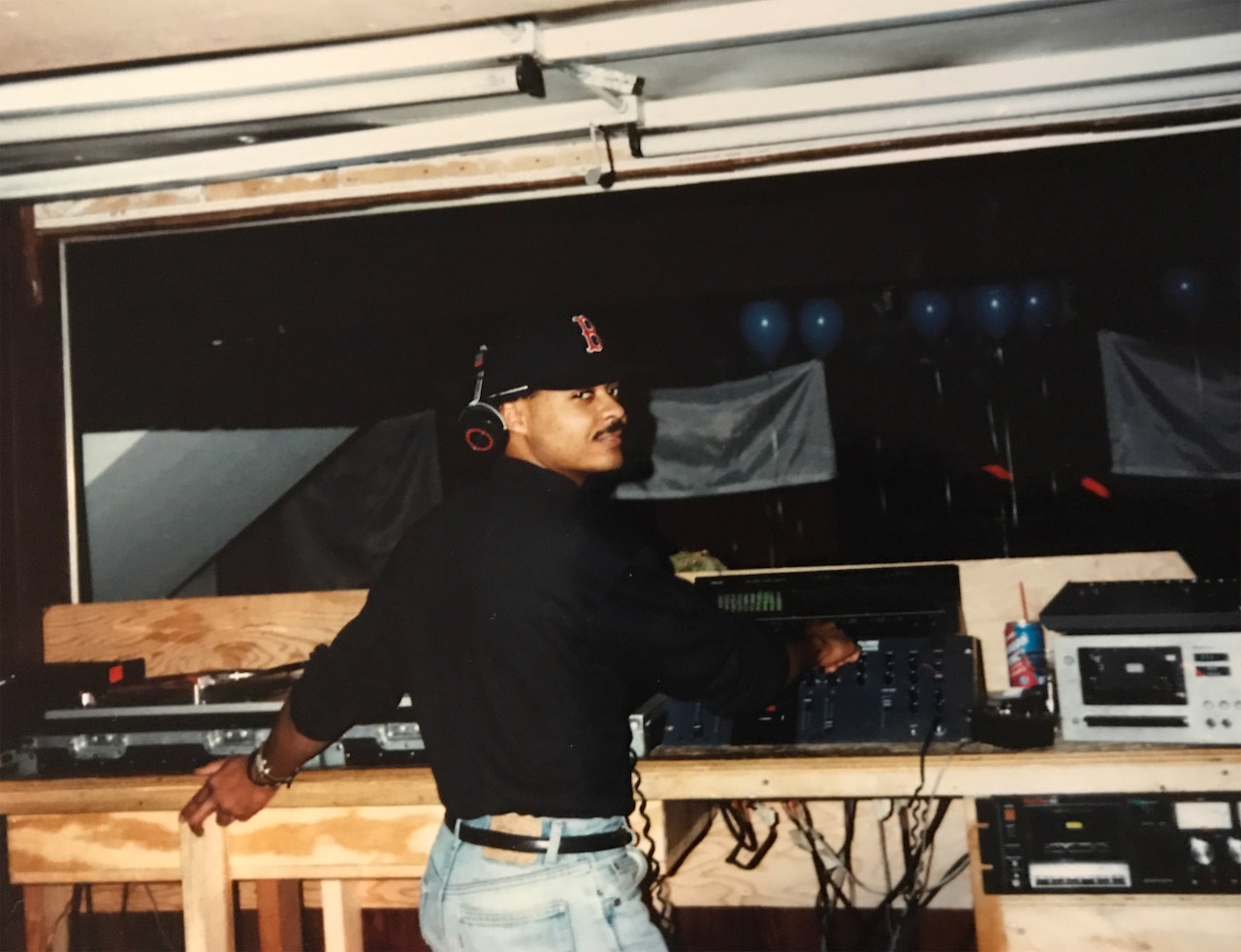
The Music Institute wasn’t glamorous, but it had considerable star power – and no one burned as brightly as May. Where Pearson and Miller deferred to the naturally expressive energy of their songs, May was more willing to muscle in on – and transform – whatever he played. “I equated him with the mixer,” said Donaven. “To me, no one works that mixer like Derrick May. When he tweaks the mixer, the knobs, you can see the veins raising up on his forearms.”
D-Wynn, AKA Darrell Wynn, would play from midnight to 3 AM. (Scott Kinchen sometimes warmed up for Wynn; on some occasions, Juan Atkins and Mike Huckaby filled in for May.) “D-Wynn could tear it up,” said May. “No one could play like D-Wynn. He had his own thing, his own style. D-Wynn would take you, as we say, to church. And he did it so beautifully. I always thought that D-Wynn was one of the best DJs in the world. But he had to make some decisions. And his decision was family. Without D-Wynn, I could not have done the Music Institute. Because he set it up for me every night. Three o’clock in the morning, I walked in there and it was on fire – because of him.”
Transmat, May’s label, had launched in 1986 with the Juan and Aaron Atkins-produced “Let’s Go,” with juddering Chicago house frames and spinback licks that prefigured May’s signature sound. (“I did the parts – the bassline and what have you – and Juan took the song and created it,” May told Dan Sicko in Techno Rebels.) But it was the next 12", 1987’s Nude Photo, that gave May’s career momentum. Hardy played the EP’s tracks four times in a row at the Music Box.
Of the numerous breakthroughs May made that year, Hardy’s approval was a significant – and hard-won – gesture. “I remember Derrick just being distraught,” said Baker, “because he would go to Chicago and he wouldn’t hear his music played.” His first DJ gig abroad – accompanied by Saunderson and Blake Baxter – was an England-wide tour organized, in 1988, by Neil Rushton, who was compiling what would become Techno! The New Dance Sound Of Detroit. “On some of the dates we went,” said May, “people were wearing suits. Some people sat down on the dancefloor, wouldn’t dance. We came back about six months later, and that’s when we saw people – ‘acieeed!’”
In that period, May said he was “busy becoming Derrick May.” But once he got wind of the renovations on Broadway, he saw an opportunity to shape his persona properly. “There were no words between us,” he said. “There was no communication. There was nothing – it was automatic. I was gonna play there. But there was a little bit of resistance from Anthony and Al [Miller], because they wanted to do their own thing and they had a vision. They knew I could do what I do, but they still had their vision.” In the end, Miller and Pearson set aside their reservations. “I don’t think we ever actually agreed to make it happen,” said Baker. “It just happened. Derrick was not going to let that happen without him being somewhere in the mix. It just wasn’t going to happen.”
The Music Institute’s juice bar – in tandem with its membership scheme – helped the owners keep a “grip on the tone” of the club, according to Miller. Only Depeche Mode seemed to object to the no alcohol policy. John McCready, reporting on Detroit techno for The Face in 1989, escorted the band to the bar. “Then they got there and realized there was no liquor, and it was too late to get them any,” said Kai Alcé, who had been hired to work the coat check. “Waters all round,” was Martin Gore’s rueful response.
Though it’s safe to assume that some clubbers were, to some degree, drunk or high (they were coming from other venues, after all), the dance scene in Detroit wasn’t big on substance abuse. “London was totally different,” said Saunderson. “People were definitely high. There’s no doubt about that... But the music got pretty bad at a certain point. You had these bad records that were becoming hits or anthems in clubs. It wasn’t because the record was good. It was because the moment and the drug that the people were taking made that record bigger and larger than it ever should have been.” The serious dancing Collins described was instead encouraged, in part, by the club’s layout. There were seats on the second floor, but it “wasn’t a place where you could really lounge,” said Pearson.
One of the best nights, Baker told me, was the beach party, where they’d set up a lifeguard booth on the dancefloor and sand in the bar area. “For Halloween, I think they raked somebody’s leaves and brought [them in] and had a coffin inside the club,” said Alcé. Others mention the time that May played Lil Louis’s “French Kiss,” a white label that only a select handful of Chicago DJs had. It became, in May’s words, “the record that everybody wanted to hear.” “And it blew the roof off the joint,” said Baker. “And he beat it up. Beat that system up – Carlos was probably repairing the speakers the next day. I can remember Scott Kinchen dancing next to me like, ‘George, what the hell is this?’ I mean, he was six feet off the floor. He’s bouncing six feet off the floor, and I was probably three feet off the floor, and we’re just going, ‘This, is, a-mazing.’”
When I asked May if he could remember the moment he played it for the first time, his gaze drifted to the floor. “I can’t. I don’t remember. It was, uh… I can’t fucking remember.” He paused for a while, trying to rescue the memory from ancient history. “I think it was… It was euphoria. It was insanity. It was crazy. When it slowed down, people lost their fucking minds.”
Robert Troutman was smoking cigarettes and drinking beer in the parking lot as “French Kiss” cycled through its rollercoaster contortions. He was a Music Institute regular and a club connoisseur who was friends with Ken Collier – the late Detroit DJ once referred to by radio DJ Electrifying Mojo as “Godfather” – and Frankie Knuckles. “Both nights were popular,” he said, “but Saturday nights popped more for me, because of the diversity of the crowd. It had everybody from all walks of life there on Saturday night. I called it ‘mixed peanuts’ – that means you were gay, straight, trans, whatever. That’s what made that party really special.”
The Next Generation and Back To Basics, to hear those who were there, were parallel dimensions – one was a mirror to Detroit, the other a utopian fresco. If the Friday nights were defined by techno’s thrilling force and May’s totemic personality, then Saturday nights were uplifting sermons gilded by feelings of community and togetherness.
We were doing it for free, for the love of it, almost for the first year.
“We’re young men. Full of testosterone,” said Baker, explaining the frictions that began to deepen behind the scenes. He was standing up in a Ralph Lauren polo shirt, shorts and boat shoes, dangling a beer from one hand, as raindrops began to drum on the hull of his boat, Means Of Egress.
There were, among other things, arguments over money. Baker’s brother-in-law, Frank Moore, had been drafted in to professionalize the operation. “My idea was, this guy’s got money, he’s family and we need to make this work, we need to have somebody fulfilling certain roles.” But Moore’s connection to the scene – he was a financial planner – was remote. He clashed with the DJs regularly.
“I had to beg him for $400 a week to play,” said May. “400 bucks! We were doing it for free, for the love of it, almost for the first year. Every fucking week it was packed. We didn’t ask for any money – and I had to fight him for $400.” In any case, May was acquiring other sources of income: he was travelling across the Atlantic more regularly, and began missing Friday nights. Pearson, who was working for Saunderson at KMS, left four months before the club closed, in November 1989, and moved to Chicago soon after.
“At the end of the day, we couldn’t pay the bills,” said Baker. “That’s why we closed. Fortunately for us, we chose the date that we were going to close, because I saw the handwriting on the wall. I had moved in with my [future] wife at that point. I’m getting phone calls in the bed... I was trying to move away from it.”
Some of those calls came from Burton. On two consecutive weekends, sometime in the summer of ’89, a car, whose two occupants sat with a baseball bat and wore white t-shirts that said “world peace,” would park on the corner of Broadway and John R. “People who were leaving the club were being threatened,” said Burton, who, alongside Sobieraj, worked at the juice bar and designed the club’s flyers. “I don’t think anyone was actually hit, but it was confrontational.”
Door staff didn’t intervene, Burton was told, because the harassment took place off club property. Upset that gay patrons risked being assaulted as they walked to their cars, Burton “abandoned” the Music Institute shortly after. “I just don’t think Detroit was ready for the Music Institute,” said Burton. “Even the people that created it, I don’t think, were ready for the Music Institute.”
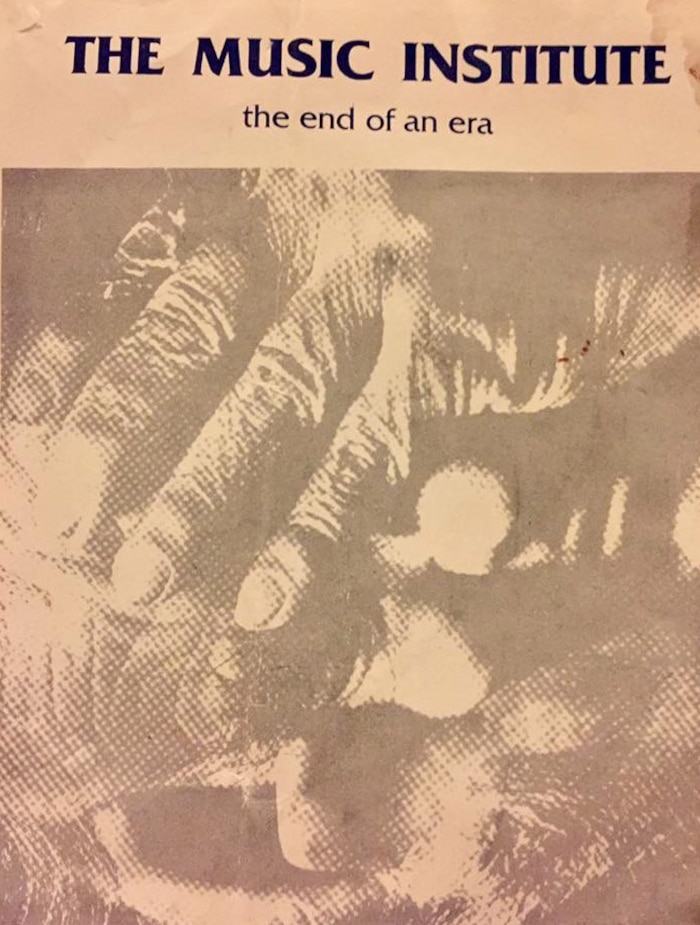
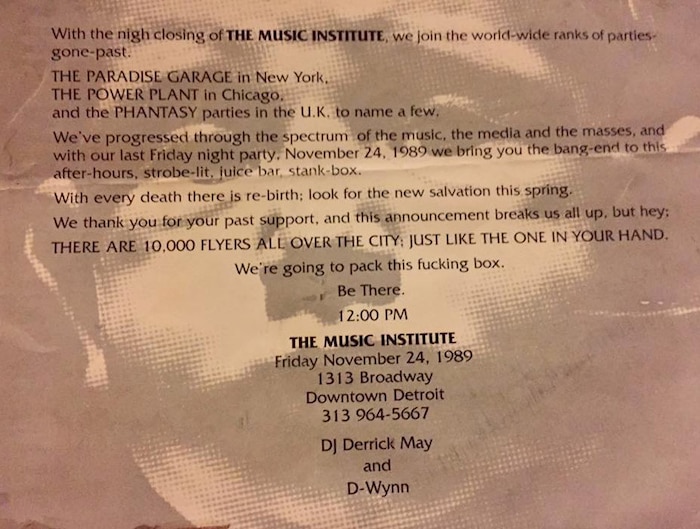
The flyer for the last Friday night, designed by another club employee Neil Ollivierra, invited locals to “pack this fucking box.” “When Derrick plugged the set with all the familiar cues, people were crying,” Ollivierra told Michaelangelo Matos in The Underground Is Massive. “You could see it in the strobe lights.” May’s last song, 808 State’s “Pacific State,” ended the night on a mournful note that still resonates.
“You make me want to cry, thinking about that club,” said May, who was about to DJ at another in Zurich. “I try not to think about the Music Institute. I feel like if I think about it, I can’t play. Because nothing compares to it. Nothing. Nowhere, not even in Japan. Amazing parties, great people, out of control scene, best soundsystem, best clubs, best management, super, super nice business-wise. Everything’s perfect, hotel’s great. But I’ve never played at a place like the Institute. Because it was, like, pure energy; it was young kids that didn’t care. They lined up at night. They were 18, 19 years old. Sweet, young kids. You know what 18, 19 looks like, when you think about it? Just kids, man. And we were just changing the world, and we didn’t know it.”
One of the stranger legacies of the Music Institute was that it made good on its pedagogic promise. The roster of Institute regulars, for one thing, reads like a who’s who of second-wave Detroit techno producers. “The Music Institute was my music education,” Carl Craig told me a few years ago. “It was the closest thing to having a Paradise Garage, or a Music Box, in Detroit.” Richie and Matthew Hawtin began crossing the border from Windsor in 1989 to go. Robert Hood was there. Anthony Shakir used to fall asleep by the speakers. “I miss that club,” said Shakir. “I’m not a club person, but I liked the music. It was about the music, it really was.”
Of the three founders, only Baker stayed in Detroit. “I moved to Toronto,” said Miller. “I was in Toronto by New Year’s Eve [1989] and I ended up being there for a year, year-and-a-half. I remember moving some things into my house from the club and then that was it. I was gone.” Baker drifted to 1515 Broadway, owned by Chris Jaszczak, for a few months. Between the move, he was loosely involved in a members-only loft party, Underground Nation, run by fashion designer Maurice Malone. (There was one more club, the Parabox Cafe, on Michigan Avenue, which he ran with Moore in the mid-’90s.) Eventually, with a young family to support, he left the club scene altogether – he married his wife, Erica, in 1990 – and became a fireman. “I just retired last August,” he said.
In music biographies, artists are routinely described as “uncompromising,” the implication being that those who aren’t are building careers on sand. But the Music Institute, in a lot of ways, was enhanced by compromise. 1315 Broadway was a plan B. Since a top of the range soundsystem was out of the question, the Ashly crossover they made do with was carefully tuned and tested. Neither May’s involvement nor the Friday nights were discussed until a few weeks, perhaps days, before the first party.
The Music Institute was a club that had no intention of running itself like a business. When it tried, the stress of keeping the place solvent corroded the ambition that inspired it: of young black men – “dance party kids,” in Baker’s words, who had undergone an accelerated adolescence – shaping an ideal space from reservoirs of desire and imagination. The Music Institute’s only luxury was the goodwill of its clubbers, who were prepared to forego the “laser light show” for a sensory experience that summoned their subconscious instead. For 18 months, they turned their bodies, and the dreams of three men, inside out.
Header image © Alton Miller; From L to R: George Baker, Christy Clay, Alton Miller, Martine Sullivan

